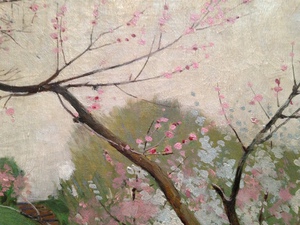Dow
Japanese Influence: Arthur Wesley Dow
Tuesday, May 12, 2015
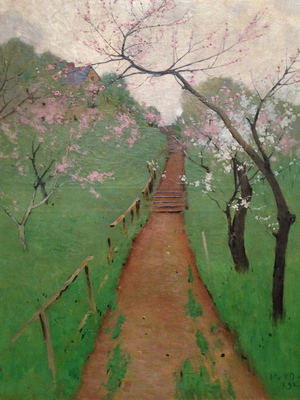
Arthur Wesley Dow, Spring Landscape, 1892, University of Michigan Art Museum
At my parents’ home in Ann Arbor as spring was arriving, I had a few minutes in the University of Michigan art museum. I was surprised by a painting of Arthur Wesley Dow’s – very lovely, and very Japanese in its loveliness.
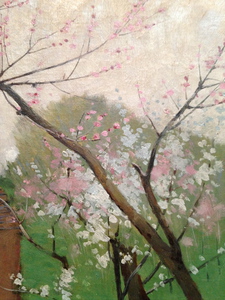
The wall text said that, in 1891, a year before he painted this picture, Dow had made a visit to the Boston Public Library, where he saw Japanese woodblock prints for the first time. “One evening with Hokusai,” he said, “gave me more light on composition and decorative effect than years of study of pictures. I surely ought to compose in an entirely different manner.”
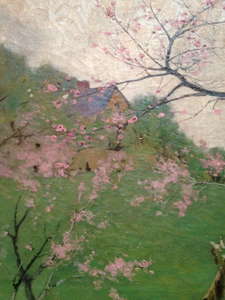
This year I have begun tracing lines of Japanese influence in French and American pictures. It is surprising how many there are and how they vein in and out. Dow, it turns out, wrote a book that affected several generations of American artists called Composition: Understanding Line, Notan, and Color. In it, he gives this definition, which I found quoted at the website of a book designer (link below):
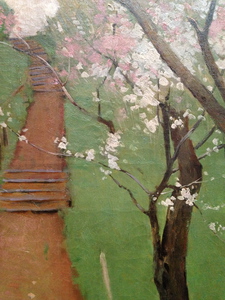
The capitals are his, but even with the emphasis I’m not sure I’ve grasped the concept yet. Looking at this picture, and at the trees in flower in our neighborhood, one thing that strikes me is that in spring the trees themselves give off light. First as a kind of yellow haze around the still-bare branches, then with the spangled beauty of tiny, starry leaves, and now in the leaning, blowing light-over-shadow way that they respond to every breath of the day.
